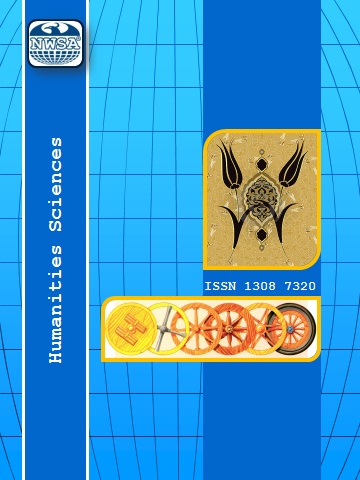References
[1] Adyyaman, E. ve Özdemir, E., (2021). COVID-19 pandemisi sürecinde tüketici davrany?larynda de?i?imler. Y?letme Bilimleri Dergisi, 11(1):101-112.
[2] Adobe Dijital Yçgörüler, (2020). Adobe Digital Economy Index: Covid-19 Impact Edition. Retrieved from.
[3] https://www.adobe.com/content/dam/acom/en/analytics/pdfs/adobe-digital-economy-index-covid-19.pdf.
[4] Atylgan, E., Akyncy, S., Aksoy, S. ve Kaynak, E., (2009). Küresel markalar için mü?teri bazly marka de?eri: Çok uluslu bir yakla?ym. Euromarketing Dergisi, 18(2):115-132.
[5] Assael, H., (2017). Consumer behavior and marketing action. Cengage Learning.
[6] Bakyrcy, F., (1999). Tüketici karar ve davrany?laryny belirleyen faktörler ve iki grup ilde tüketim fonksiyonlary ile mukayesesi. s.16.
[7] Ali, F., (2021, 19 ?ubat). Koronavirüs pandemisi syrasynda e-ticaret grafiklerle. Digital Commerce 360. Eri?im adresi: https://www.digitalcommerce360.com/2021/02/19/ecommerce-during-coronavirus-pandemic-in-charts/.
[8] Bearden, W.O. and Etzel, M.J., (1982). Reference group influence on product and brand purchase decisions. Journal of consumer research, 9(2):183-194.
[9] Bhatia, S., (2021). Reduction in mobility and COVID-19 transmission. Nature communications, 12(1):1090.
[10] Bhatnagar, A., Misra, S., and Rao, H.R., (2000). On risk, convenience, and ynternet shopping behavior. Communications of the ACM, 43(11):98-105.
[11] Bozkurt, Ö.Ç. ve Söyleyici, G.T., (2019). Sosyal medya ve tüketici davrani?lari ili?kisi: Türkiyedeki sosyal medya kullanicilari üzerine bir ara?tirma. Kesit Akademi Dergisi, (9):36-54.
[12] CDC, (2021). COVID-19 Overview and infection prevention and control priorities in Non-US healthcare settings.
[13] https://www.cdc.gov/coronavirus/2019-ncov/hcp/non-us-settings/overview/index.html.
[14] Chin, C., (2020). The impact of COVID-19 pandemic on E-commerce and digital transformation of the retail industry. Asian Journal of Economics, Business, and Accounting, 21(1):1-7.
[15] Chung, J.E., Lee, S., and Jung, J., (2020). Cybercrime and online consumer behavior during the COVID-19 pandemic: A review and future research agenda. International Journal of Consumer Studies, 44(6):609-621. doi: 10.1111/ijcs.12649.
[16] Çin Ulusal Ystatistik Bürosu, (2020). Statistical bulletin of national economic and social development of the people's Republic of China for the first quarter of 2020. Retrieved from http://www.stats.gov.cn/english/PressRelease/202004/t20200417_1737371.html.
[17] Demir, A. ve Kylyç, S., (2021). Covid-19 pandemisi sürecinde tüketicilerin marka de?erlendirmeleri. Y?letme Ara?tyrmalary Dergisi, 13(1):32-43.
[18] Dubois, B., Laurent, G., and Czellar, S., (2001). Consumer rapport to luxury: Analyzing complex and ambivalent attitudes. Journal of consumer research, 28(2):326-342.
[19] E?iyor, A. ve Uslu Divanoglu, S., (2021). COVID-19 salgynynyn tüketici satyn alma davrany?laryna etkisi. Yönetim ve Ekonomi, 52(1):5-20.
[20] Ghezzi, A. and Cortimiglia, M.N., (2021). E-commerce and COVID-19: How firms can harness digital entrepreneurship to navigate the crisis. Technological Forecasting and Social Change, 163:120431. doi: 10.1016/j.techfore.2020.120431.
[21] Hacialio?lu, A. ve Sa?lam, M., (2021). COVID-19 pandemi sürecinde tüketici davrani?lari ve e-ticaretteki de?i?imler. Medya ve Kültürel Çaly?malar Dergisi, 3(1):16-29.
[22] Hanna, Nessim and Richard Wozniak: Consumer Behavior An Applied Approach, New Jersey, Prentice Hall Inc., 2001.
[23] Hoffman, D.L. and Novak, T.P., (1996). Marketing in hypermedia computer-mediated environments: conceptual foundations. Journal of Marketing, 60(3):50-68.
[24] Jobber, D., Lancaster, G., and Le Meunier-FitzHugh, K., (2019). Selling and sales management. Pearson UK.
[25] Karabulut, M., (1989). Tüketici Davrany?lary (3. Basky). Ystanbul: Y.Ü. Y?letme Yktisadi Enstitüsü.
[26] Kardes, F.R., Cronley, M.L., and Cline, T.W., (2011). Consumer behavior: science and practice. Cengage Learning.
[27] Kim, D.J., Ferrin, D.L., and Rao, H.R., (2008). A trust-based consumer decision-making model in electronic commerce: The role of trust, perceived risk, and their antecedents. Decision support systems, 44(2):544-564.
[28] Kim, J. and Lennon, S.J., (2013). Effects of reputation and website quality on online consumers' emotions and repurchase yntentions. Journal of Research in Interactive Marketing, 7(1):33-56.
[29] Koç, E., (2008). Tüketici davrany?y ve pazarlama stratejileri: global ve yerel yakla?ym, gözden geçirilmi? 2. Basky. Ankara: Seçkin Yayyncylyk.
[30] Kotler, P., Armstrong, G., Harris, L.C., and Piercy, N., (2021). Principles of marketing. Pearson Education Limited.
[31] Liang, T.P., Ho, Y.T., Li, Y.W., and Turban, E., (2011). What drives social commerce: the role of social support and relationship quality. International Journal of Electronic Commerce, 16(2):69-90.
[32] Maryati, T., (2020). Consumer behavior changes post pandemic Covid-19. International Journal of Halal Research, 2(2):84-89.
[33] McCrae, R.R. and Costa Jr, P.T., (2008). The five-factor theory of personality. Handbook of personality: Theory and research, 3:159-181.
[34] Molla, R., (2021). The pandemic turbocharged online shopping. It wont be temporary. Retrieved from https://www.vox.com/recode/22262946/ecommerce-growth-pandemic-shopify-amazon.
[35] Odaba?y, Y. ve Bary?, G., (2004). Tüketici davrany?y (4. Basky). Ystanbul: MediaCat Yayynlary
[36] Odaba?y, Y. ve Bary?, G., (2013), Tüketici Davrany?y (13. Basky). Ystanbul: MediaCat Yayynlary.
[37] Özdemir, ?., (2013), Tüketici davrany?larynyn analizi. Torlak ve Özmen (Ed.), Pazarlama Ylkeleri içinde (44-61). Eski?ehir: T.C. Anadolu Üniversitesi Yayyny.
[38] Rani, P., (2014). Factors influencing consumer behaviour, International Journal of Current Research and Academic Review, 2(9):52-61.
[39] Schiffman, L.G., Kanuk, L.L., and Wisenblit, J., (2010). Consumer behavior, global edition. Pearson Higher Education, London, 12(2):113-120.
[40] Shavitt, S. and Fazio, R.H., (1991). Effects of attribute salience on the evaluation of objects and persons. Journal of experimental social psychology, 27(3):222-241.
[41] Türkiye Ystatistik Kurumu, (2021). Hanehalky Bili?im Teknolojileri Kullanym Ara?tyrmasy 2021. Eri?im adresi: https://data.tuik.gov.tr/Bulten/Index?p=Hanehalki-Bilisim-Teknolojileri-(BT)-Kullanim-Arastirmasi-2021-37437.
[42] Temizkan, V., Güven, E.Ö., Yylmazer, A., ve Andsoy, C., (2023). COVID-19 ile gerçekle?en tüketici davrany?lary ve e?ilimleri üzerine bir ara?tyrma. Yönetim ve Ekonomi Dergisi, 54(1):5-20.
[43] Tokatly, D., (2015). Marka bilinirli?inin tüketici satyn alma kararyna etkisi; Efesi ziyaret etmek için gelen yabancy turistlere yönelik bir ara?tyrma. s.63
[44] Tuncer, D., Arpacy, T., Ayhan, D.Y., Böge, E. ve Üner, M.M., (1994). Pazarlama (2. Basky). Ankara: Gazi Büro Kitabevi.
[45] Turunç, Ö. ve Yetkin, D.G., (2020). Covid-19 kaynakly pandemi döneminde tüketici davrani?lari: parekendeci markali ürünler üzerine bir ara?tirma. Gaziantep University Journal of Social Sciences, 19(Covid-19 Special Issue), 457-471.
[46] Ulusal Ystatistik Ofisi, (2020). Internet sales as a percentage of total retail sales, November 2020. Retrieved from https://www.ons.gov.uk/businessindustryandtrade/retailindustry/bulletins/retailsales/november2020.
[47] WHO, (2020). Coronavirus disease (COVID-19) pandemic. Eri?im Tarihi:29 Nisan 2023). https://www.who.int/emergencies/disease-outbreak-news/item/2020-DON233.
[48] Wu, M.Y., (2003). Online consumers' switching behavior: a buyer behavior perspective. Journal of Consumer Marketing, 20(3):263-279.
[49] Xu, Y., Zhang, R., and Xu, Y., (2020). How do consumers respond to crises? consumer behavior research in china during the COVID-19 pandemic. Journal of Retailing and Consumer Services, 59:102357. doi: 10.1016/j.jretconser.2020.102357.
[50] Yu, C., Fang, X., and Jiang, Z., (2016). Online reviews as decision-making tools: the effect of online consumer reviews on product sales. Information & Management, 53(3):323-337.
 +90(535) 849 84 68
+90(535) 849 84 68 nwsa.akademi@hotmail.com
nwsa.akademi@hotmail.com Fırat Akademi Samsun-Türkiye
Fırat Akademi Samsun-Türkiye
